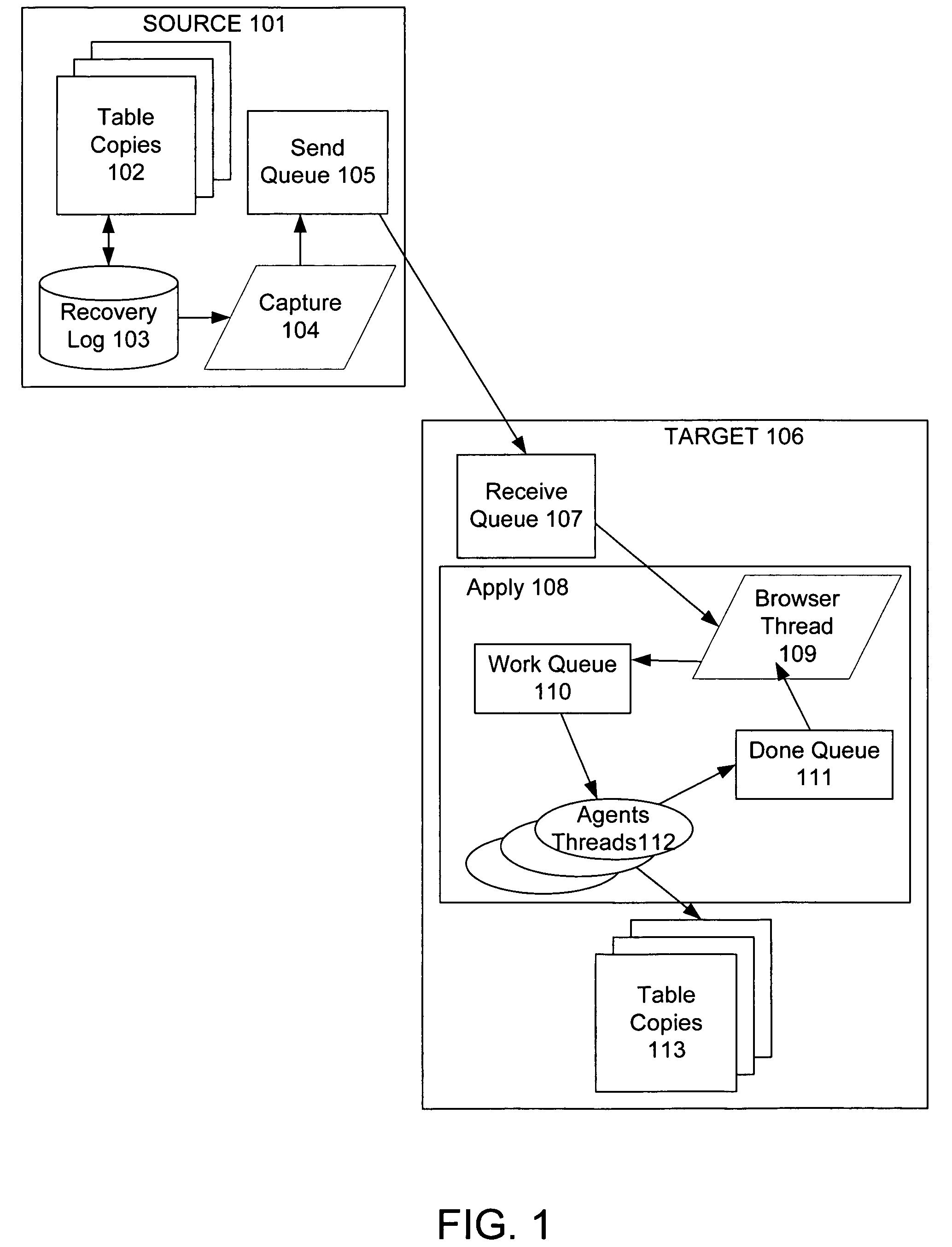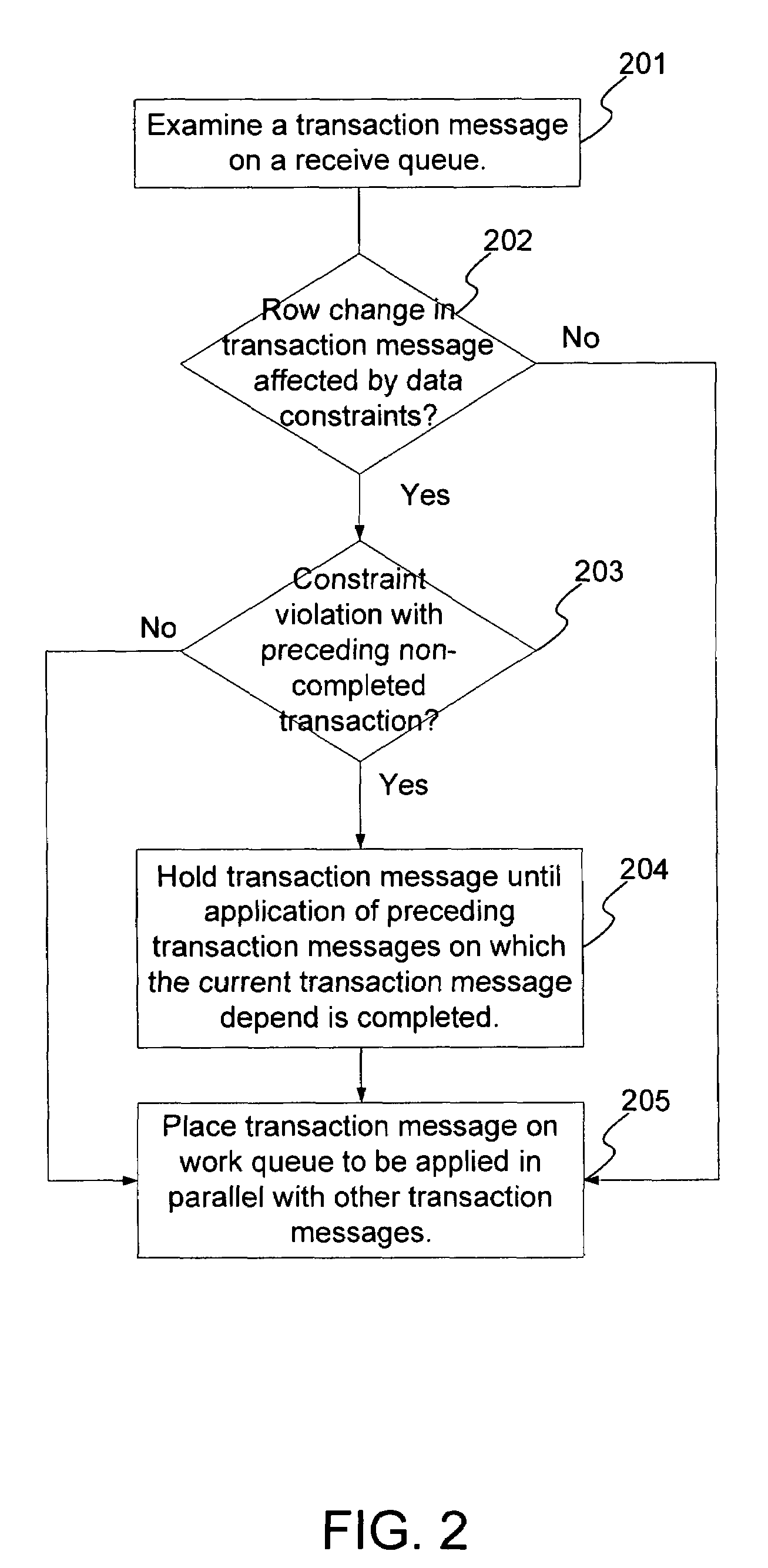Techniques to preserve data constraints and referential integrity in asynchronous transactional replication of relational tables
a transactional replication and data constraint technology, applied in the field of asynchronous replication of data in a database system, can solve the problems of inflexible approach, inability to extend, and inability to meet the needs of data processing, and achieve the effect of high degree of parallelism
- Summary
- Abstract
- Description
- Claims
- Application Information
AI Technical Summary
Benefits of technology
Problems solved by technology
Method used
Image
Examples
case 1
[0126]If Apply 108 crashes anytime during the initial load, it uses the information stored in the SAVERI table to recover the RI constraints. If a row exists for an RI constraint in the SAVERI table, Apply 108 loads that constraint into memory. It is also possible that due to some errors, a subscription may be deactivated by Apply 108, and Apply 108 crashes before it is able to add the RI constraints back on the target table. To overcome this situation, Apply 108 records some more information in it's internal tables to help it to recover. On recovery, Apply 108 first tries to add the RI constraints back before processing anything else.
case 2
[0127]Apply 108 may get a constraint violation (violation of rules) when trying to put back the RI constraints.
[0128]This can occur if, for example, the parent table is not loaded and the corresponding subscription is inactive, but the child table is loaded and the corresponding subscription is about to be activated. In this case, the child table has more data than the parent and this violates the RI constraint. To handle this, on getting the constraint violation, Apply 108 does not put the RI constraint back. In the future, whenever the subscription corresponding to the parent table is activated, the RI constraint will be put back on.
[0129]Another example is when an insert operation on the parent table and an insert operation on the child table occur in different transaction messages and the insert operation on the parent table is delayed (due to a deadlock, for example). The insert operation on the child table makes it through and Apply 108 is about to activate the subscription co...
PUM
 Login to View More
Login to View More Abstract
Description
Claims
Application Information
 Login to View More
Login to View More - R&D
- Intellectual Property
- Life Sciences
- Materials
- Tech Scout
- Unparalleled Data Quality
- Higher Quality Content
- 60% Fewer Hallucinations
Browse by: Latest US Patents, China's latest patents, Technical Efficacy Thesaurus, Application Domain, Technology Topic, Popular Technical Reports.
© 2025 PatSnap. All rights reserved.Legal|Privacy policy|Modern Slavery Act Transparency Statement|Sitemap|About US| Contact US: help@patsnap.com



